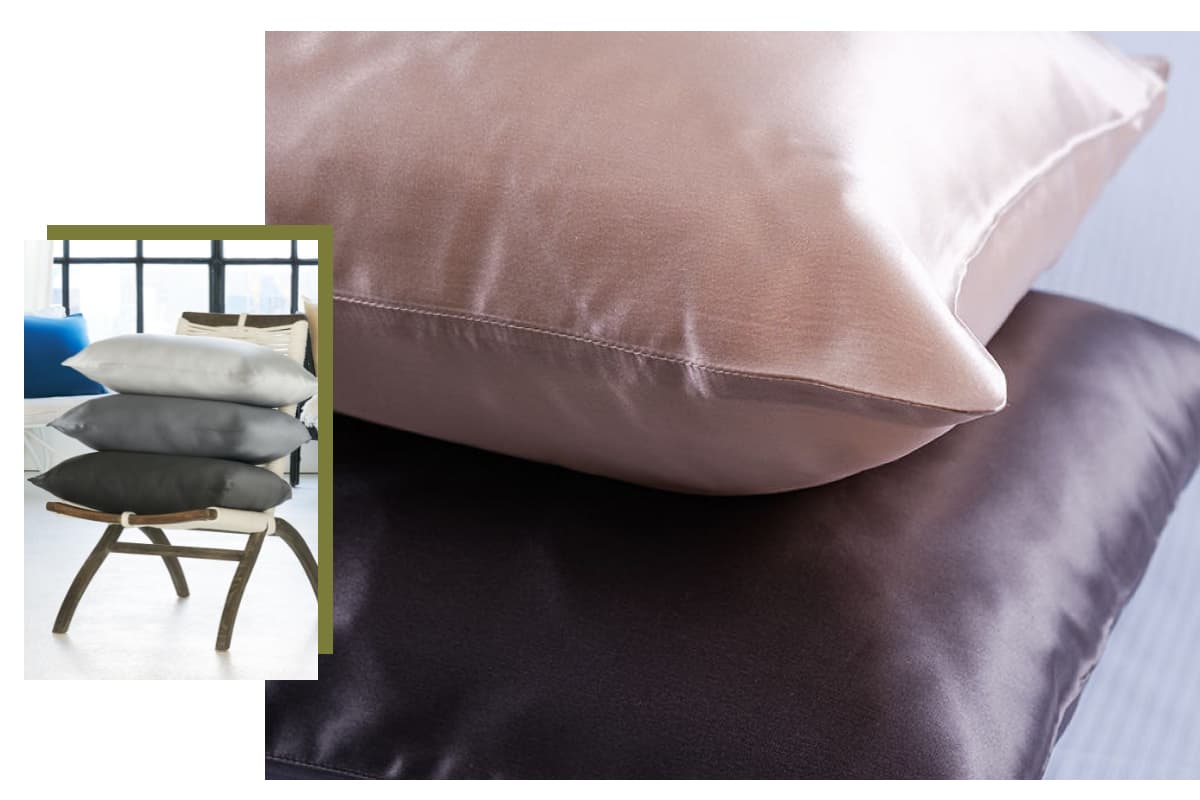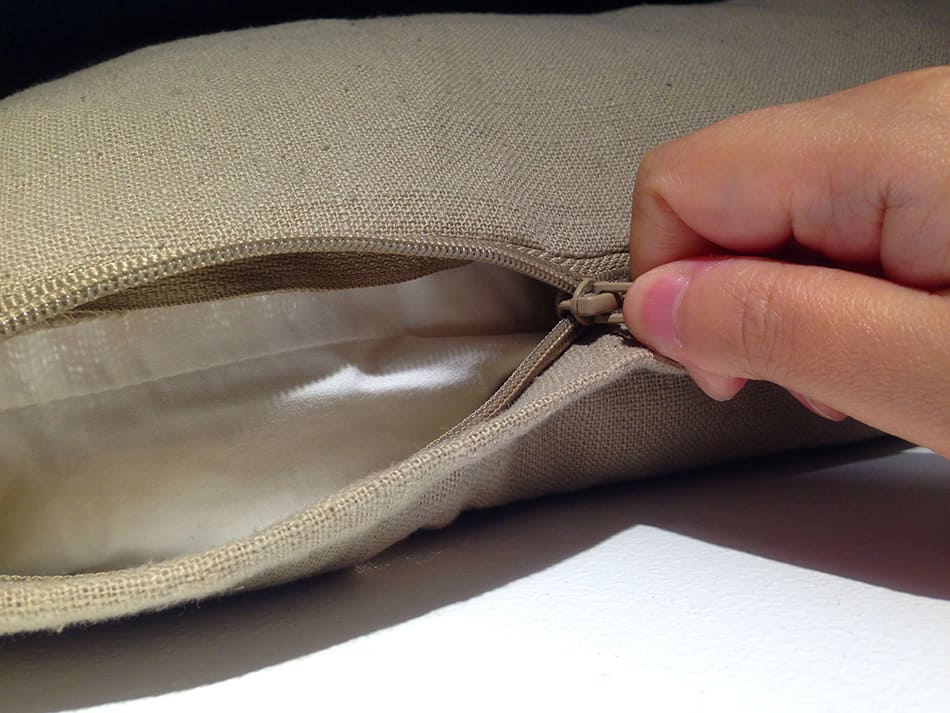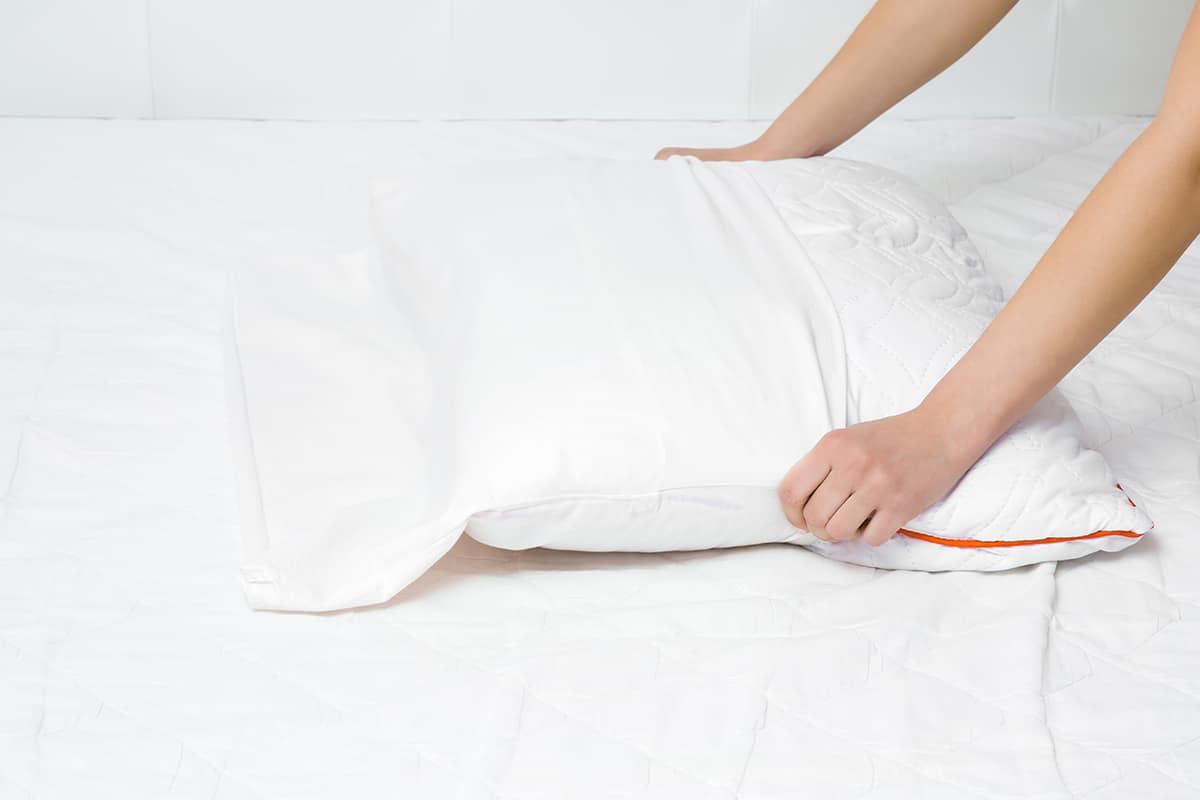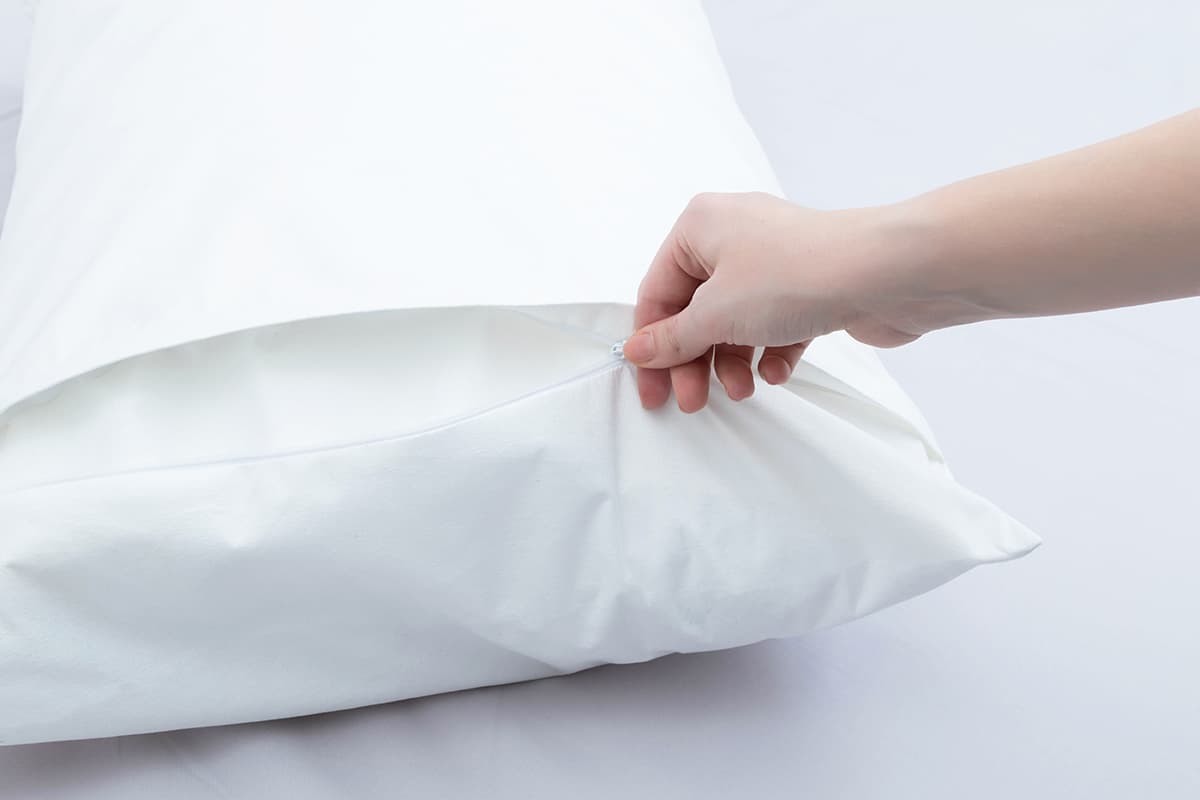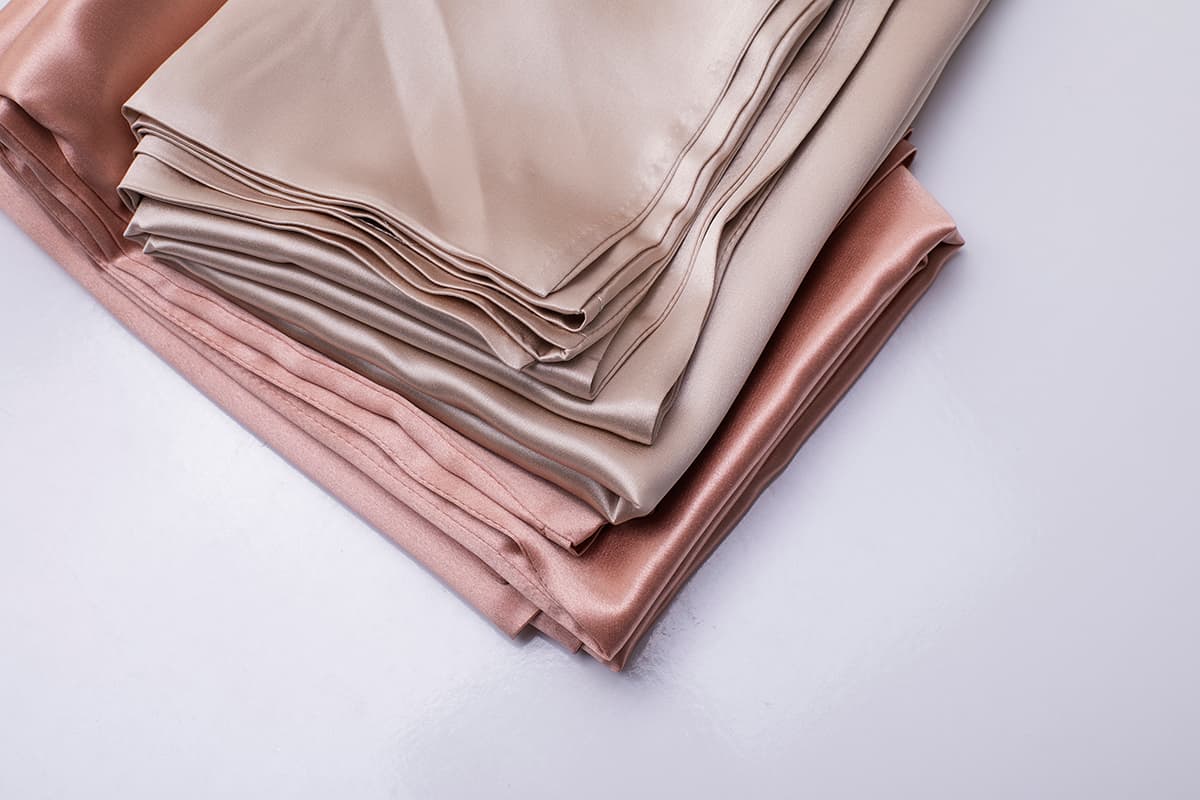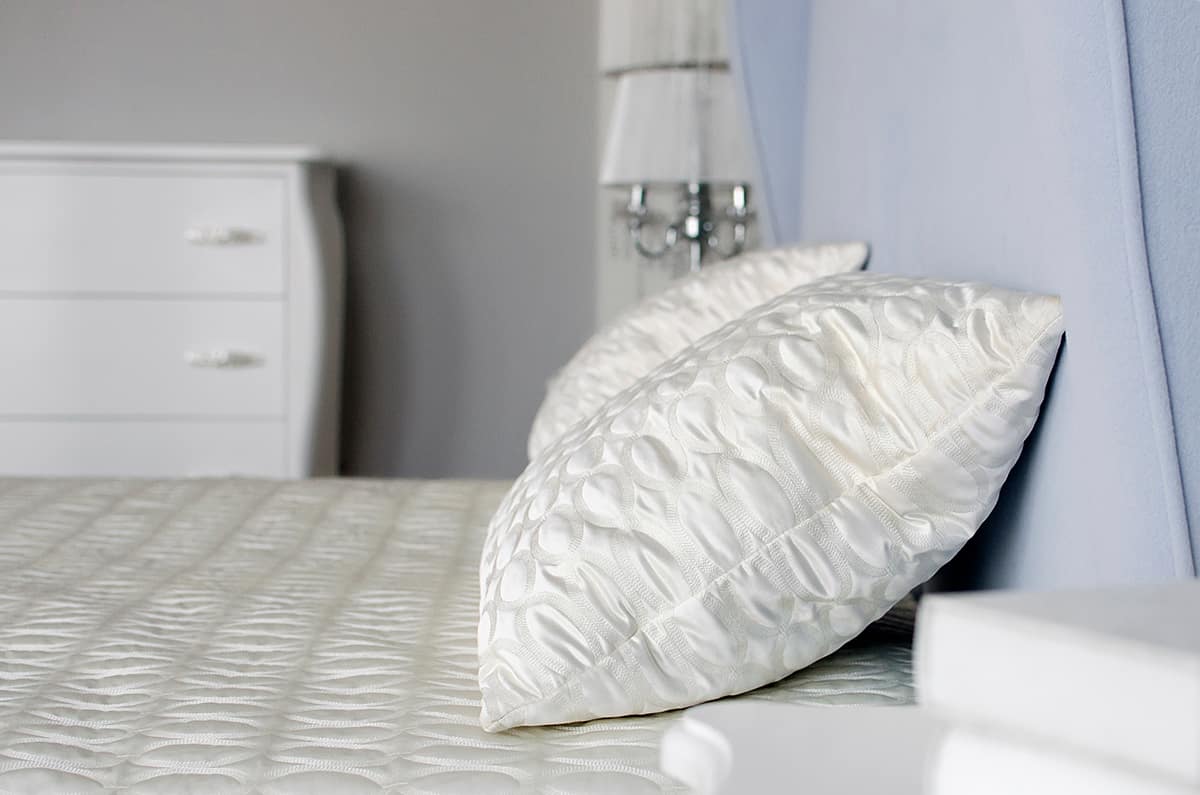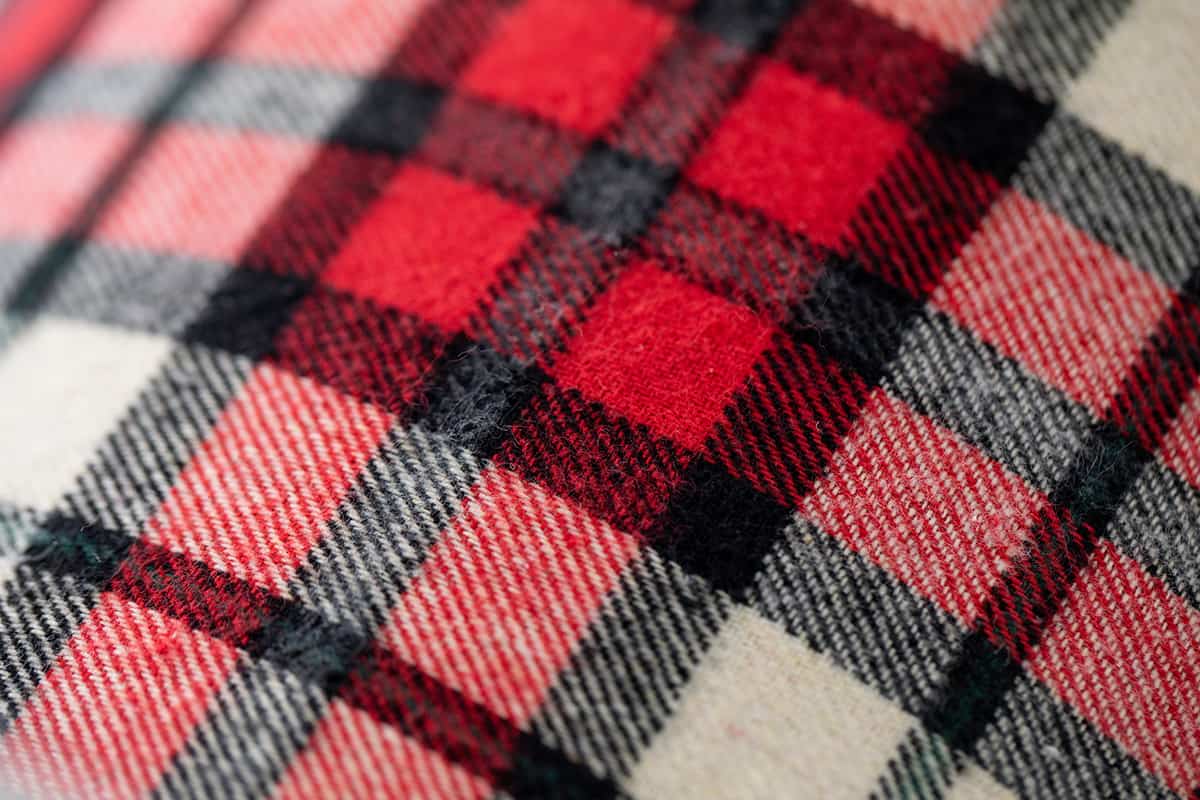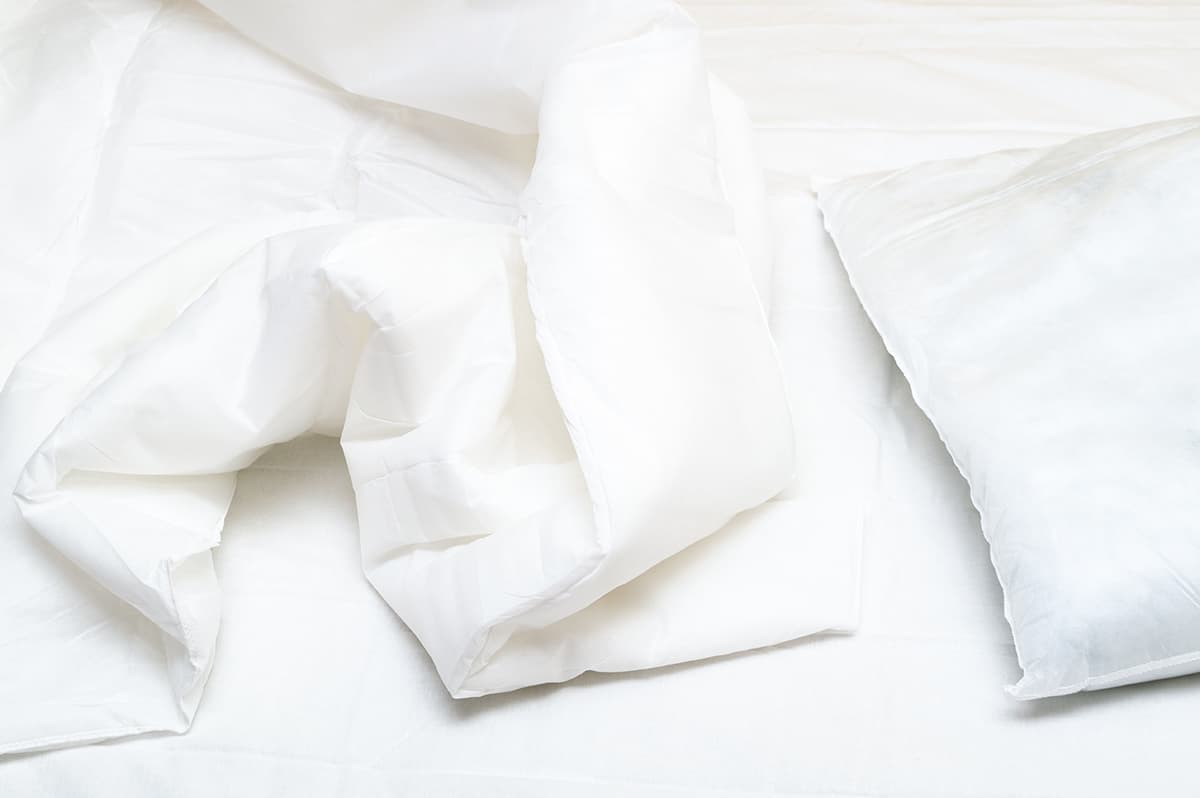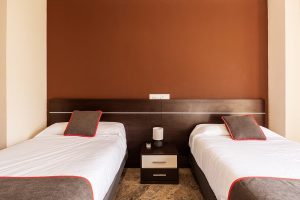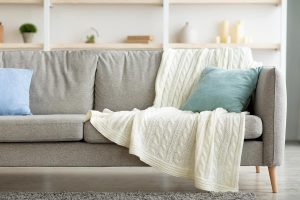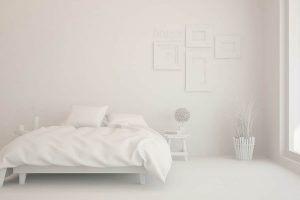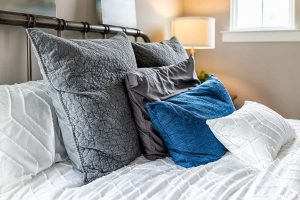Pillows are common objects of deep study. After all, your levels of back pain the following morning will depend in no small part on the kind of support you have beneath your neck. This is why many of us spend hours researching the best memory foam or the type of microbeads that combines the right amount of softness with good support.
And yet, it’s not the pillow that’s directly underneath your head – it’s the pillowcase. That’s the texture that will be rubbing against your cheeks for hours on end, therefore determining the number of bacteria or mites around it. They are also the visible part of the pillow and can influence the look of your bed.
So, don’t leave pillowcases as an afterthought! Here, we will explore the different types of pillowcases out there.
Wait, There Are Types of Pillowcases?
The types of pillowcases available are classified by their shape or material. You should be able to find any combination of both types, either at your local home store or online.
The shape of your pillowcase will help determine the overall look of your bedding. Most of the shapes, however, will be provided by the pillow shapes and their sizes inside them. The shape and model will also determine the ease with which you can change them, although some types come with different types of closure.
Meanwhile, the material will determine the texture, temperature, and breathability of your pillowcase. By extension, this will determine most of your comfort.
Types of Pillowcases by Shape
There are three main types of pillowcase shapes:
Housewife pillowcases
Housewife pillowcases are the most common type across most homes. When you buy an all-inclusive set of sheets, it will most likely include housewife pillowcases.
This model is meant to provide a snug fit around the entire pillow. They are usually closed to the side, either with a button clasp or a zipper. As a general rule, housewife pillowcases don’t let the pillow escape or slide out easily. However, this also means that whenever you take it out to wash it, you may have to wrestle with it a bit to take out the pillow.
Nevertheless, their popularity means that housewife pillowcases can be found in almost every material, in a variety of colors, and at every price range.
Oxford pillowcases
Oxford pillowcases are usually considered an upper-range, more upscale option. Instead of simply surrounding the pillow tightly, they also include trim or a stitched border that is supposed to be around the pillow. This border is usually around 2 inches wide, and it may include a little bit of padding. This makes the overall pillow appear bigger and fluffier.
It should be noted that Oxford pillowcases come in two subtypes: “true Oxford” and “mock Oxford.” The difference between these two types is often not visible at a simple glance. True Oxford pillowcases have mitered better-defined corners.
Oxford pillowcases often come with zipper closures hidden on the back, although occasionally Velcro is used. This is because Oxford pillowcases are very rarely used for sleeping or directly beneath your head. Their extra volume makes them ideal for throw pillows. Because of this, they are also usually made up of finer fabrics, such as satin, silk, or velvety blends.
Bag Style Pillowcases
The main feature of a bag-style pillowcase is that they simply have a big opening on the side, so you can slide the pillow through it as if it were a bag. They rarely have a button clasp, a velcro strap, or a zipper to hold things together. They also tend to be a bit looser than their Housewife counterparts.
For home use, bag-style pillowcases can be problematic, as the pillow can just as easily come out as it comes in. However, this makes them very easy to take out for washing. This is why bag-style pillowcases are the kind that you would find in hotels across the world and even in hospitals and nursing homes. Whenever you have a high rotation of people and pillowcases, a bag style will be the natural choice.
Because of this, the overwhelming majority of bag-style pillowcases are made of cotton or polyester fabrics. More expensive options often include anti-bacterial fabrics.
By Material
Another practical way to classify the different types of pillowcases is by material. The models listed above should be available in all of the following materials:
Cotton pillowcases
Cotton is one of the most popular materials for both bedsheets and pillowcases alike. Cotton is a fairly affordable and soft natural fabric. It is also easy to dye in any color and can usually be washed easily without any special treatment of washing cycles.
Cotton does have two major downsides: first, it is very prone to wrinkles. Therefore, any pillowcases in public areas of the house will need to be carefully ironed. Cotton can also trap smells when it doesn’t dry properly. Fortunately, this is a resilient fabric, so you will just need to toss it for a few minutes into the tumble dryer if you ever want to freshen it up.
If you are looking for a softer alternative to cotton, but can’t afford silk, look for anything with a thread count above 250.
Silk pillowcases
Silk is one of the most expensive fabrics used in bedding and sleepwear. It is superbly soft and smooth, and it often feels cool to the touch. This is often a blessing for anyone who is prone to hot flashes or has sensitive skin.
If you live in a colder region, however, it may be uncomfortable to permanently keep a cold layer beneath you. This is also not a good fabric for anybody who has pets or even facial piercings: this fabric is notorious for tearing easily. You will need to take great care to make silk pillowcases last as long as cotton ones.
Satin pillowcases
Satin is a type of synthetic fabric that has been treated to look and feel like silk. Satin is widely used in the cosmetic industry, as it is believed that it prevents fine lines in the face and it can help smooth down frizzy hair. In this sense, it offers many of the advantages of silk, although at half the price or less.
It is usually very thin, soft to the touch, and has a shimmery finish. Satin pillowcases are available in a variety of colors. However, this isn’t a durable fabric: it tears easily, and it can only be washed on a gentle cycle. Besides, you won’t be able to tumble dry it.
Flannel pillowcases
Flannel became a symbol of the low-maintenance early 90s because it’s affordable, warm, and super comfortable. This fuzzy fabric is made from specially-treated thick cotton, and it’s one of the most popular materials for throw blankets.
For pillowcases, however, it can be trickier to manage. Repeated washing can damage the fabric, making it less smooth and creating small knots or hairballs on top of it.
If you are prone to acne, flannel may clog your pores directly, especially if it grows knots. Also, its warmth can work against you: the extra sweat and grease around your face is just another opportunity for skin problems to arise.
Blended and Synthetic Pillowcases
There are as many types of synthetic blends as there are pillow colors. However, most blended fabrics will be made up of polyester, with some satin, spandex, or cotton added. As a general rule, polyester pillowcases are more affordable than cotton ones, and they are about just as durable.
They do not have all the qualities of cotton, though. Polyester tends to run hot, and it can cause you to sweat profusely. Polyester sheets and pillowcases also tend to have more static and often cling to our skin, which can be uncomfortable. On the other hand, they dry more quickly after being washed, and they come in brighter colors.
Which Pillowcases Should You Get?
Pillowcases offer you a quick way to alter the look of your bed: simply switch the case, and you will get the chance to add a new color to your existing scheme. The shapes and textures can also be used to add some personality to your room.
If your bed has two or more rows of pillows (like a hotel bed would), a good trick is to display Oxford pillowcases on the front row, arranged asymmetrically. For best results, use a color that contrasts the ones used in the back rows or in the general bedding.
Reserve bag-shaped pillowcases for the final row (the one that you would put your head onto): these are less visible, but you will need to wash them more often.
Housewife pillowcases, on the other hand, can be used in any position. As they tend to be pretty discreet, they rarely call any attention to their shape. If you find a set in a particularly bright color or a lovely design, these pillowcases can become a soft alternative to a throw cushion.
Final Thoughts
Pillowcases don’t usually get as much publicity as the pillows themselves. They won’t determine the overall shape of the pillow or its size. However, the type of fabric that you use can still protect your face and hair while you sleep or help you stay warm. In addition, special trims like those offered by Oxford pillowcases can add a touch of elegance to your bedroom.
